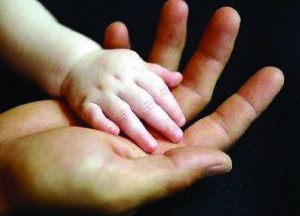 If prevention is, in fact, the best medicine, then we need to pay much closer attention to the role chemicals in the environment play in the rise of disease, related health care costs, and human suffering.
If prevention is, in fact, the best medicine, then we need to pay much closer attention to the role chemicals in the environment play in the rise of disease, related health care costs, and human suffering.
In last week’s New York Times, Nicholas Kristof highlights the issue in his column “Do Toxins Cause Autism?”
As a new parent I can tell you: that is an attention grabbing headline. But if you read the column, you will see that scientists and the medical community are paying attention to this area of inquiry for very real reasons. Policy makers and parents need to be paying attention, too — parents because children are particularly vulnerable to toxic chemicals — and policy makers because evidence that harmful chemicals are contributing to disease suggests prevention imperatives that need to be a part of the health care debate.
Policy makers and parents need to be paying attention, and soon they will be.
Right now the growth in awareness and concern about the connections between environmental toxins and childhood disease is steady but relatively incremental. But a convergence of factors is about to change that and supercharge the level of attention to the issue — Kristof touches on a couple in his article.
The dramatic increase in incidents of diseases, like Autism, with no known cause has parents (and people thinking about becoming parents) exceptionally anxious and desperately searching for answers. For today’s parent there is a new layer to responding to a child’s unusual behavioral episodes: we wonder, “is this just normal behavior, or should I be concerned?” I hear a lot of that. I’ve thought it.
But parents aren’t just worrying, they are also connecting — online. Online readers know that the new reality is that new information — accurate or not, sensational or measured, and responsible — can get to just about everyone we know overnight. That’s particularly true for parents.
And it is the new information that we are starting to get, and that we are about to get a lot more of, that, in combination with hyper-concern and hyper-connectivity will cause an explosion in awareness and hopefully bring action.
Kristof’s piece refers to an article by Dr. Philip Landrigan, professor of pediatrics at the Mount Sinai School of Medicine and chair of the school’s department of preventive medicine. Kristof writes:
The article cites “historically important, proof-of-concept studies that specifically link autism to environmental exposures experienced prenatally.” It adds that the “likelihood is high” that many chemicals “have potential to cause injury to the developing brain and to produce neurodevelopmental disorders.”
While his article is full of cautionary language, Dr. Landrigan told me that he is increasingly confident that autism and other ailments are, in part, the result of the impact of environmental chemicals on the brain as it is being formed.
“The crux of this is brain development” he said. “If babies are exposed in the womb or shortly after birth to chemicals that interfere with brain development, the consequences last a lifetime.”
For parents, the questions and uncertainty are frustrating. But thanks to the National Children’s Study we’re about to get a lot more information in the next couple of years. Articles like Dr. Landrigan’s suggest that suspicions about connections are going to turn into clear connections that require action. Here’s a little information on the National Children’s Study:
The National Children’s Study will examine the effects of environmental influences on the health and development of 100,000 children across the United States, following them from before birth until age 21. The goal of the Study is to improve the health and well-being of children.
… The Study defines “environment” broadly, taking a number of natural and man-made environmental, biological, genetic, and psychosocial factors into account. By studying children through their different phases of growth and development, researchers will be better able to understand the role these factors have on health and disease. Findings from the Study will be made available as the research progresses, making potential benefits known to the public as soon as possible.
After I read Kristof’s piece I reached out to Dr. Landrigan, a champion of the National Children’s Study, to find out when we can expect to get useful, actionable information from the study. His response was two to three years.
As Kristof points out in his column, there’s a lot of potential for sensationalizing the information — that will be particularly true of information we learn about chemicals actually in the blood and tissue of our children that are found to contribute to disease.
Our goal at Healthy Child Healthy World will be to provide parents with concrete, realistic steps they can take to protect their children, born and unborn. That’s our specialty.
In the meantime Kristof’s final thoughts make a good deal of sense: Apply the precautionary principle to avoid unnecessary products that contain potentially harmful toxins.
And pay attention to and support the National Children’s Study.
Larry Eason is Chair of the Board of Healthy Child Healthy World and Dr. Landrigan is a Founding Board Member and Co-Chair of the organization’s Science Advisory Board. Healthy Child is working to inspire parents to protect young children from harmful chemicals.
Related Reading:
10 Americans: ‘An Inconvenient Truth’ for Toxics and Health
Canaries in the Coalmine
Healthy Child Healthy World is a 501(c)(3) nonprofit inspiring parents to protect young children from harmful chemicals. Learn more at HealthyChild.org
Read more: http://healthychild.org/blog/comments/chemicals_and_our_endangered_children/#ixzz0hFjTPZfO
[…] autism non-toxic toxic chemicals landrigan national children’s study toxins natural environmen… […]